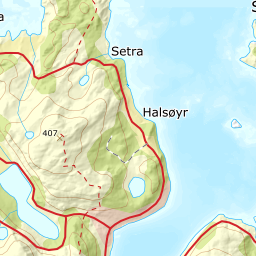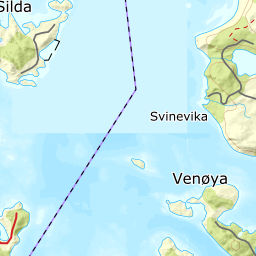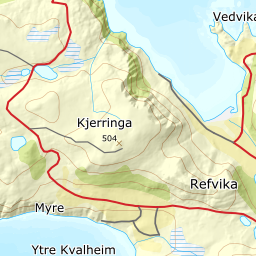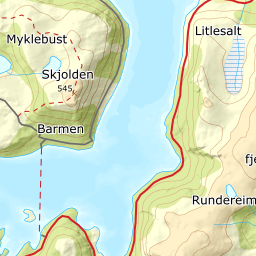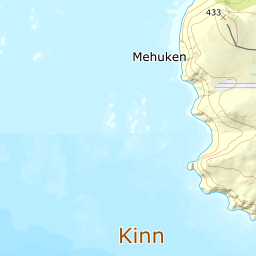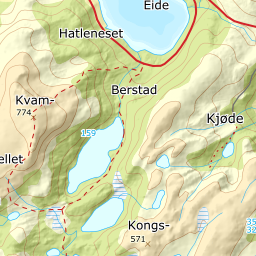Hardt slag
Ved krigsutbrotet 9. april 1940 budde Ragnvald og Arthur Torheim med sin næraste familie på Ulvesund fyr som ligg på fastlandsida heilt nord i Ulvesund. Ragnvald var fyrassistent og fiskar. Arthur var til sjøs. Far deira, Mons Torheim var fyrmeister. Han hadde tidlegare vore fyrmeister og budd med familien sin på to fyr lenger nord i landet, - Skardholmen fyr i Steigen og Grasøyane fyr på Sunnmøre. Begge fyra ligg langt til havs, og familien hadde ved dette vorte særleg godt samansveisa.
Det vart eit hardt slag for familien då Ragnvald miste livet 27. desember 1941 i Måløyraidet, og då dei etter å ha venta på livsteikn frå Arthur etter freden, fekk bod om at han var omkomen. Han hadde teke seg over Nordsjøen i mai 1940 for å delta i motstandskampen.
Biografiar i Våre falne
TORHEIM, RAGNVALD ANTONI, fiskeskipper, Selje. Fødd 6. august 1912 i Davik, son til Mons Torheim, fødd 1882 same stad, og Lina fødd Teige, fødd 1885 i Herøy, Sunnmøre. Gift 1936 i Rovde, Sunnmøre, med Emma, fødd 1907. Eitt barn.
Navigasjonskurs. Var reserveassistent i fyrvesenet og fiskeskipper. Omkom under strandhogget på Måløy 27. desember 1941 då han var truffen av ein granat. Gravlagd ved Nord-Vågsøy kyrkje. Broren Arthur Henry omkom 1943.
TORHEIM, ARTHUR HENRY, dekksmann, Selje. Fødd 16. januar 1918 i Steigen, son til Mons Torheim, fødd 1882 i Davik, og Lina fødd Teige, fødd 1885 i Herøy, Sunnmøre. Var utskriven dekksmann på u-båten ''Ula''. Omkom 3. desember 1943 ved drukningsulukke i Dundee, Skottland. Gravlagd ved Nord-Vågsøy kyrkje. Broren Ragnvald Antoni omkom 1941.
Ragnvald
Ragnvald Torheim og broren Karsten låg 27. desember 1941 med båten sin ved garden Tvendesæter - som ligg eit kort stykke sørom Ulvesund fyr - då engelske marinefarty utpå føremiddagen gjekk til åtak på på ein tysk båt som brått gjekk seg beint opp i stranda der. Mannskapet hoppa på land og prøvde å røma unna. Det same gjorde Ragnvald og Karsten. Ragnvald vart truffen av ein granatsplint og alvorleg såra.
På Ulvesund fyr venta kona Emma i heimen med den tre år gamle sonen deira. Ved middagstider ringde telefonen og ho fekk bod om å koma til Tvendesæter. Då ho kom fram, sa Ragnvald stille til henne: ''Det trykkjer så underleg inni meg.'' Ingen kunne gjera noko. Han døydde same dagen, og vart gravlagd på kyrkjegarden ved Nord-Vågsøy kyrkje 6. januar 1942.
Arthur
Arthur Torheim reiste til sjøs i ung alder. To dagar før det tyske åtaket på Noreg, 9.april 1940, kom båten han var på til Sauda. Arthur melde seg som frivillig til forsvaret mot okkupasjonsmakta. Etter kapitulasjonen vart han tilsett som hjelpepoliti i Odda, men reiste nordover og kom til Ulvesund 17. mai. Saman med fire andre drog han 26. mai med fiskekutteren ''Flink'' til England.
Arthur kom inn i den norske marinen og var ei tid dekksmann på ubåten ''Ula'' som hadde base i Dundee i Skottland. Her miste han livet ved ei tragisk hending. Han vart funnen død i hamnebassenget utan at det vart klårlagt korleis det bar til.
Urna til Arthur kom heim til Norge frå England med torpedojagaren ''Arendal'' i slutten av september 1945. Båten hadde med kring 400 urner som vart tekne i land på Honnørbryggja i Oslo. Under ein kort seremoni la kong Haakon VII ned krans med ei siste takk for innsatsen for fedrelandet. Urna til Arthur vart vidaresendt til Måløy der ho vart henta av broren Karsten. Gravferda var 2. oktober 1945 då urna vart nedsett i grava til broren.
Grava
Familien sette opp eit vakkert gravminne på grava til Ragnvald. Det er sett saman av prismeforma granittsteinar i kvart hjørne med karmar mellom dei. I eine enden er reist namnestein som har mørk, slipt framside, kross-symbol og innskrift. Liggjande mot denne er namneplata til broren plassert, - ein rektangulær stein med kross-symbol og innskrift. Noverande namnestein for Arthur er av ny dato, sett i staden for den opphavelege, der innskrifta med åra hadde vorte nesten uleseleg.
Krigsgrav
Grava til Ragnvald og Arthur Torheim er ei krigsgrav, utan at noko ved gravminnet beinveges ber bod om dette. Gravminnet vart reist av familien, og grava har heile tida vorte stelt og halden ved like som privat grav. Begge har namna sine på minnesteinen over falne frå tidlegare Nord-Vågsøy kommune like ved og vert heidra kvar 17. mai og ved andre markeringar. Det har såleis aldri vore offentleg markering ved grava bortsett frå ei markering 27. desember 2001 som briten Peter Bell fekk stand i samband med innsamling av tilfang om Måløyraidet Ordføraren i Vågsøy var då til stades. Det var også ei minnemarkering ved grava 3. juli 2005, denne gongen òg etter initivativ av Peter Bell. Han og fleire representantar frå Green Berets saman med fleire frå familien, var tilstades.
Måløyraidet
Tidleg om morgonen 27. desember 1941 gjekk ein alliert styrke til åtak i Måløy. Målet var å nedkjempa dei tyske styrkane der, uskadeleggjera dei tyske kanonstillingane og øydeleggja industriverksemder av nytte for den tyske okkupasjonsmakta. Åtaket kom uventa på tyskarane som leid eit sviande nederlag. Dei fleste av den kring 300 mann sterke styrken vart drepne eller tekne til fange. Dei allierte tapa var små, men leiaren for den norske eininga, kaptein Martin Linge fall i kamp ved Måløy Hotell. Berre ein sivil miste livet, Ragnvald Torheim som nord i Ulvesundet vart dødeleg såra i granateld frå eit av dei allierte krigsskipa.
Ubåten ''Ula''
Ubåten ''Ula'' vart bygd i 1942 for den nederlandske marinen, men då nesten heile det påtenkte ubåtmannskapet kom bort under eit krigsforlis, vart båten overteken av den norske marinen. Den 28. mars 1943 døypte kong Haakon VII den nye ubåten P-66 og gav han namnet ''Ula''.
Ula overlevde krigen og var i teneste fleire år etterpå. I 1965 vart han seld til Tyskland for opphogging. Arthur Torheim tenestgjorde ei tid på ''Ula''.




